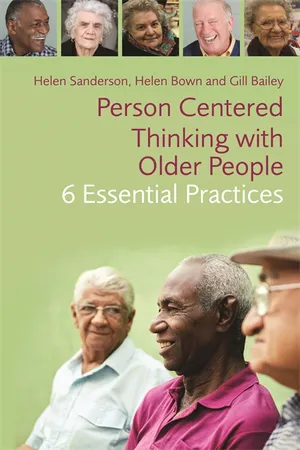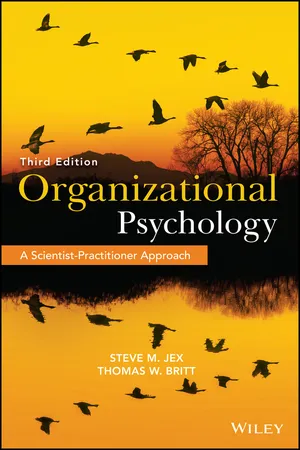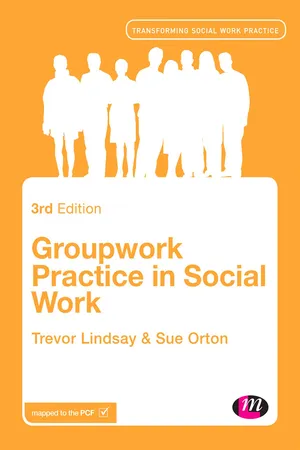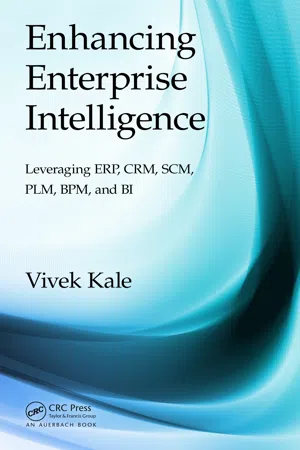Business
Team Process
Team process refers to the series of steps and interactions that a group of individuals follows to achieve a common goal. It involves collaboration, communication, decision-making, and problem-solving. Effective team processes can lead to improved productivity, innovation, and overall success for the business.
Written by Perlego with AI-assistance
Related key terms
Related key terms
1 of 4
Related key terms
1 of 3
6 Key excerpts on "Team Process"
- eBook - ePub
- Paul GUSTAVSON, Stewart Liff(Authors)
- 2014(Publication Date)
- AMACOM(Publisher)
Teams Have Processes, Too
Key principle: All your processes must support the goal of making everyone a leader.TEAMS ARE GENERALLY PART of a larger organization and at least one of its processes (e.g., product development, demand creation, supply chain); by the same token, teams have their own processes, which are essential to carrying out the team's purpose and objectives. These processes include performing the core work of the team, managing team performance, selecting and on-boarding new members, building capability of the team and its members, and managing the disengagement or deselecting of team members.This chapter will help you think about how to identify your team's processes. It will also walk you through the aforementioned processes and offer examples of how to think about and design your own processes.PERFORMING THE CORE WORK
Every team has its core work to perform. However, for everyone to ultimately become a leader, the team as a whole needs to understand how that work actually flows so that it can make sure that work is being performed as effectively and efficiently as possible.An excellent way to examine how core work is performed is through the process analysis process, which we introduced in the last chapter . The best way to get started is through process mapping, which is a tool that helps you visualize the flow of work and identify the points within a process where value is created. It is an essential tool for grasping and communicating your team's work. Let's look at this issue in a bit more depth.Subsets of activities where value is created in distinct and measurable ways are called state changes. A state change is a collection of work activities where the characteristics of the product or service are essentially changed or converted. For example, an information request may be changed to an accepted request that may then be changed to an answer. State changes are the building blocks by which an organization/team creates a product or service that is valuable to its buyers. - eBook - ePub
Person-Centred Thinking with Older People
6 Essential Practices
- Helen Bown, Gill Bailey, Helen Sanderson(Authors)
- 2015(Publication Date)
- Jessica Kingsley Publishers(Publisher)
Employees at the Tri-Counties Regional Center are encouraged to participate in an agency-wide operations committee to share information, discuss issues and ideas and contribute to decision making. They’re also supported with a performance review process that encourages staff to identify annual and other job-related goals.Employee development is supported through training, coaching and conversations about what is/isn’t working for the employees. These processes are enactments of a shared value of empowerment.Accountability: Clear and compelling processes that deliver the purpose and reflect performance standards are imperative, and need to be aligned at organisational, team and individual levels. When a team focuses on its purpose it is doing good. But doing good does not guarantee that the team is doing good well . An organisation cannot survive on mission-driven passion alone. Clear processes that reflect person-centred values contribute to doing things well. That consistency of practice gives employees a sense of comfort in knowing what to expect and what they can rely on. Team members can ‘trust the process’, allowing them to focus on work activities that contribute to excellent individual and team outcomes.PROCESSES TO DELIVER SUCCESSNow that you’re clear about purpose, the people in your team and what performance is expected, it’s time to help your team think about how it will work together. This ranges from establishing team guidelines, to thinking about meetings and decision making.Process question 1: how will we work together?One-page profiles and one-page team profiles serve an important function in helping to determine processes that will work well for the team. Look at what is important to individuals and the team as a whole. Here are some ways to embed processes in your team-work to reflect the information shared in one-page profiles.GUIDELINES Different teams use different labels such as values and principles, detailed guidelines or ground rules. All are summaries of how a team works together.You do not want this to become the team rulebook. Principles work better than rules because a rule has to be obeyed, and to do that, you are expected to suspend your judgement.37 - eBook - ePub
Organizational Psychology
A Scientist-Practitioner Approach
- Steve M. Jex, Thomas W. Britt(Authors)
- 2014(Publication Date)
- Wiley(Publisher)
Chapter 12 Team Dynamics and Processes Within OrganizationsThe purpose of this chapter is to discuss the voluminous amount of recent work, primarily by organizational psychologists, on the factors that contribute to team development and effectiveness. We purposefully use the term team rather than group because so much of the work done by organizational psychologists uses teams within organizations performing their normal work or being placed in realistic simulations to provide a more controlled assessment of team dynamics and performance. Kozlowski and Bell (2003) provide a detailed definition of what constitutes a team. They define work teams as “composed of two or more individuals who (a) exist to perform organizationally relevant tasks, (b) share one or more common goals, (c) interact socially, (d) exhibit task interdependencies, (e) maintain and manage boundaries, and (f) are embedded in an organizational context that sets boundaries, constrains the team, and influences exchanges with other units in the broader entity” (p. 334).We begin the chapter by examining models of how teams develop from being newly formed to being capable of solving problems and completing tasks. We then address the question of what constitutes team effectiveness, followed by an examination of several influential models of team effectiveness. These models have helped to guide much of the organizational research on team effectiveness and have served as a foundation for many organizational efforts to improve the performance of teams.Across these models, several variables repeatedly surface as determinants of team effectiveness. These include team composition, task design, organizational resources, organizational rewards, team goals, and Team Processes (e.g., shared mental models, transactive memory). Each of these are examined individually, and some of the most common methods organizations use to improve the performance of teams are described. The chapter concludes with a brief discussion of the role that teams are likely to play in organizations in the future. - Gerard P. Hodgkinson, J. Kevin Ford, Gerard P. Hodgkinson, J. Kevin Ford(Authors)
- 2012(Publication Date)
- Wiley-Blackwell(Publisher)
Chapter 7 THE PROCESSES OF TEAM STAFFING: A REVIEW OF RELEVANT STUDIES Stephen J. Zaccaro and Gia A. DiRosa George Mason University, Fairfax, VA Teams are a fact of organizational life. The performance requirements confronting individuals and managers in organizations have become much more complex in terms of work interdependence and information dynamics (Devine, Clayton, Philips, Dunford, & Melner, 1999), to the point where effectiveness and success requires the close collaboration and integration of multiple individual efforts. Accordingly, there has been a significant increase over the past 20 years in research that has focused on the nature of teams in organizations, and the drivers of team effectiveness (Kozlowski & Ilgen, 2006; Mathieu, Maynard, Rapp, & Gilson, 2008). Such research has followed elaborated versions of the basic inputs-process-outcomes model (Hackman & Morris, 1975; Ilgen, Hollenbeck, Johnson, & Jundt, 2005; Marks, Mathieu, & Zaccaro, 2001; McGrath, 1964, 1984). The core premise of such models is that team and contextual attributes influence (a) Team Processes (e.g., information exchange, planning, execution) and (b) team emergent states (e.g., cohesion, collective efficacy, trust). Team Processes and emergent states in turn affect individual and team outcomes (e.g., member satisfaction, team viability, team performance, team innovation). The mix within a team of individual knowledge, skills, abilities and other attributes represents one of the more critical inputs that drive Team Processes, emergent states, and outcomes (Kozlowski & Ilgen, 2006; Mathieu et al., 2008). For example, several researchers have found with the use of meta-analytic strategies that individual- and team-level personality variables were a significant predictor of team performance (Bell, 2007; Stewart, 2006). These studies show that “who is included in the team matters” (Stewart, 2006, p. 44)- eBook - ePub
- Trevor Lindsay, Sue Orton(Authors)
- 2014(Publication Date)
- Learning Matters(Publisher)
Many social work students have difficulty in understanding the concept of ‘process’ and how it differs from ‘content’. It is also quite difficult to explain what we mean by process but, as a phenomenon in groupwork, an understanding and awareness of process is critical. It may be useful to use the example of baking a loaf. If we want to bake bread we need ingredients – flour, yeast, water, salt, at least, and perhaps some fat, milk or flavouring. These ingredients are the content but they do not come together to form bread until they have gone through the processes of mixing, kneading, proving and baking. So these processes that take place change the ingredients so that at the end we have something different – bread. Likewise with groupwork, you should expect process to work in a way that changes the group in some way. Process can work either in favour of the desired outcome for the group or against it. However, just as the baker can alter the processes involved, for example the length of proving, the baking temperature and so forth, the group facilitator can work with the group processes to ensure that a favourable outcome is more likely, as we shall see shortly.In groupwork, Douglas (2000, p36) explains that all ‘process’ means:is that there are discernible patterns of behaviour which tend to emerge in groups over time and appear to focus around certain aspects of the group’s behaviour .The most fundamental process of all, he asserts, is interaction. Douglas (1995) says that the term ‘process’ is used to mean all the things, which happen in communication between individuals . . . but not the actual words (p47) (our emphasis). Process concerns what occurs as a result of the words.Benson (2001) explains that process is about the how of individual and group experience –how people react to certain circumstances or are behaving towards each other, or how the group acts together. It is reflected in the quality of the group experience. We need to understand that there is a difference between content and process. Content refers to the what - Vivek Kale(Author)
- 2016(Publication Date)
- Auerbach Publications(Publisher)
A process is an ordering of activities with a beginning and an end; it has inputs (in terms of resources, materials, and information) and a specified output (the results it produces). We may thus define a process as any sequence of steps that is initiated by an event; transforms information, materials, or commitments; and produces an output. A business process is typically associated with operational objectives and business relationships, for example, an insurance claims process or an engineering development process. A process may be wholly contained within a single organizational unit or may span different enterprises, such as in a customer–supplier relationship. Typical examples of processes that cross organizational boundaries are purchasing and sales processes jointly set up by buying and selling organizations, supported by EDI and value-added networks. The Internet is now a trigger for the design of new business processes and the redesign of existing ones.A business process has the following behavior:- It may contain defined conditions triggering its initiation in each new instance (e.g., the arrival of a claim) and defined outputs at its completion.
- It may involve formal or relatively informal interactions between participants.
- It has a duration that may vary widely.
- It may contain a series of automated activities and/or manual activities. Activities may be large and complex, involving the flow of materials, information, and business commitments.
- It exhibits a very dynamic nature, so it can respond to demands from customers and to changing market conditions.
- It is widely distributed and customized across boundaries within and between enterprises, often spanning multiple applications with very different technology platforms.
- It is usually long running—a single instance of a process such as order to cash may run for months or even years.
Every business process implies processing: A series of activities (processing steps) leading to some form of transformation of data or products for which the process exists. Transformations may be executed manually or in an automated way. A transformation will encompass multiple processing steps. Finally, every process delivers a product, like a mortgage or an authorized invoice. The extent to which the end product of a process can be specified in advance and can be standardized impacts the way that processes and their workflows can be structured and automated.
Index pages curate the most relevant extracts from our library of academic textbooks. They’ve been created using an in-house natural language model (NLM), each adding context and meaning to key research topics.
Explore more topic indexes
Explore more topic indexes
1 of 6
Explore more topic indexes
1 of 4





